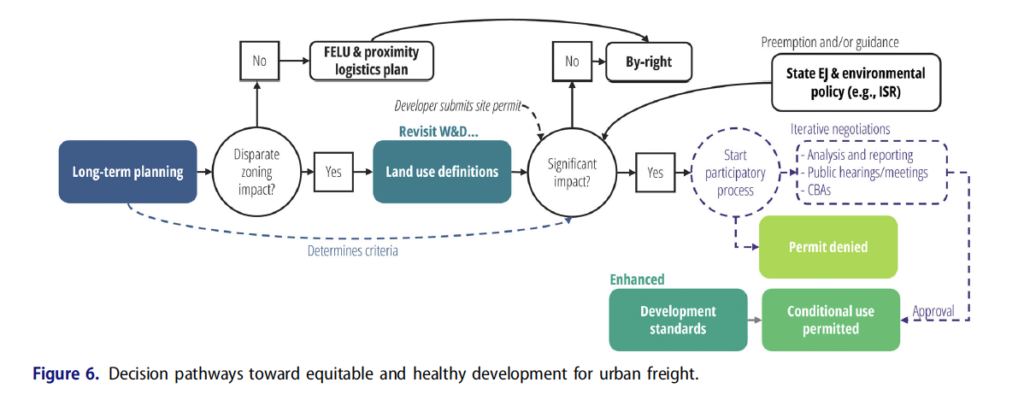The rapid growth of warehousing and distribution (W&D) centers across U.S. cities is reshaping urban freight systems. As demand for fast deliveries climbs, logistics facilities are moving closer to residential areas, raising serious concerns about health risks from increased freight traffic. Communities already burdened by industrial activity are particularly vulnerable to the noise, air pollution, and safety hazards that accompany these developments.
Zoning is a key tool for local governments to manage this growth. But how effectively is it being used to protect public health, especially in historically impacted neighborhoods? A recent study examined 92 zoning actions across 67 jurisdictions to assess how zoning supports or impedes environmental justice (EJ) in freight development.
Fragmented and Reactive Responses
The most common local response to new W&D development was discretionary permitting, where projects are evaluated on a case-by-case basis. This can allow for community input and tailored safeguards, but without broader policy frameworks, such decisions may not align with long-term goals or equity priorities.
Other zoning actions included:
- Updates to land use definitions
- New development standards
- Conditional use permits
- Long-term plans
While many of these actions limited W&D growth (such as restricting by-right development) few were explicitly designed to reduce public health disparities. Most regulations cited general environmental or aesthetic concerns, not the specific impacts of freight on disadvantaged communities.
Environmental Justice Still Marginal
The study found that EJ principles were rarely central in zoning decisions. Where they were present, mainly in jurisdictions with firm long-term plans and supportive state policies, communities benefited from more explicit protections. But overall, zoning remains a fragmented patchwork with limited consideration for freight’s disproportionate health impacts.
Worse, some restrictive zoning actions may reflect broader exclusionary patterns that reinforce racial and socioeconomic segregation, further entrenching health disparities.

Moving Toward Equitable Freight Planning
For professionals in city logistics, the message is clear: local jurisdictions need strategic, equity-focused frameworks to guide freight development. That includes:
- Coordinated long-term land use plans
- Stronger state-level environmental guidelines
- Zoning flexibility that avoids concentrating freight burdens in vulnerable areas
Zoning alone won’t fix urban freight’s inequities. But without thoughtful zoning reform, the opportunity for healthier, more just logistics development may be lost. As cities confront rising freight volumes, aligning zoning with environmental justice is not just good policy—it’s an urgent public health imperative.
Source:
